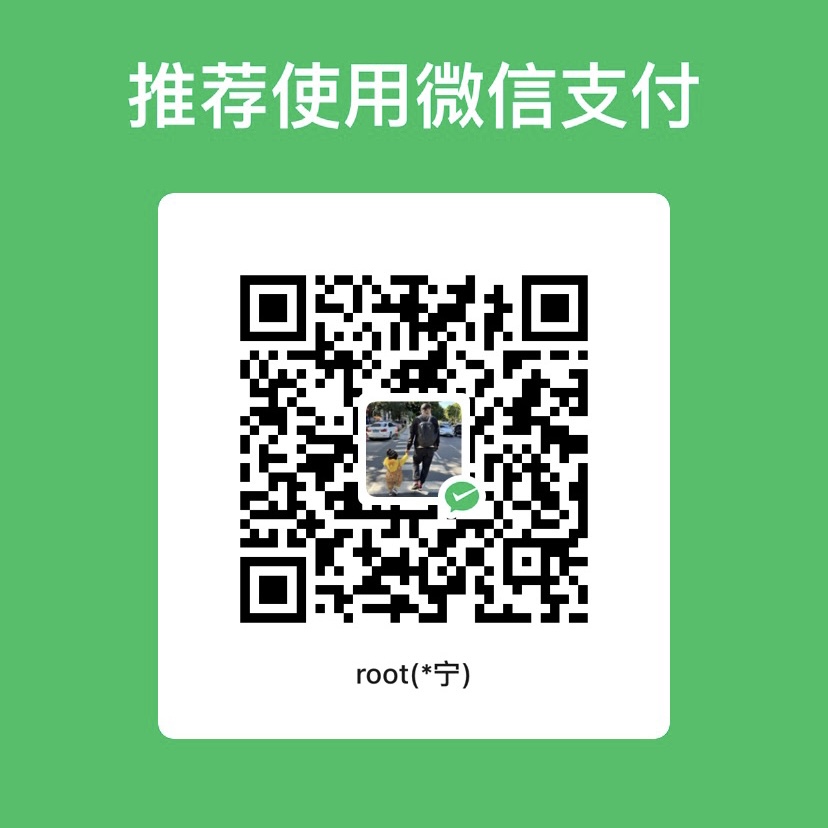解决RestTemplate使用PATCH方法报错
之前的开发过程中遇到过各种各样的接口对接,有WebService也有Restful的接口,通讯方式也是多种多样。对于模拟 HTTP请求,一直是使用 HTTPClient的。
先介绍 HTTP请求的几个方法:
- GET:通过请求URI得到资源
- POST:用于添加新的内容
- PUT:用于修改某个内容,若不存在则添加
- DELETE:删除某个内容
- OPTIONS :询问可以执行哪些方法
- HEAD :类似于GET, 但是不返回body信息,用于检查对象是否存在,以及得到对象的元数据
- CONNECT :用于代理进行传输,如使用SSL
- TRACE:用于远程诊断服务器
最近的几个项目都开始使用SpringBoot了,突然想到Spring全家桶里面会不会有一种代码习惯更贴近Spring体系的接口交互的方式?简单的使用搜索引擎查找一下,就找到了**RestTemplate**。
RestTemplate:Spring基于 HTTPClient封装开发的一个客户端编程工具包,遵循命名约定习惯,方法名由 HTTP方法 + 返回对象类型 组成。
HTTP各种方法对应 RestTemplate 中提供的方法
| 返回值 | 方法及描述 |
|---|---|
void | delete(String url, Map<String,?> uriVariables)Delete the resources at the specified URI. |
void | delete(String url, Object... uriVariables)Delete the resources at the specified URI. |
void | delete(URI url)Delete the resources at the specified URL. |
<T> ResponseEntity<T> | exchange(RequestEntity<?> requestEntity, Class<T> responseType)Execute the request specified in the given [RequestEntity]( HTTPs://docs.spring.io/spring-framework/docs/current/javadoc-api/org/springframework/ HTTP/RequestEntity.html) and return the response as [ResponseEntity]( HTTPs://docs.spring.io/spring-framework/docs/current/javadoc-api/org/springframework/ HTTP/ResponseEntity.html). |
<T> ResponseEntity<T> | exchange(RequestEntity<?> requestEntity, ParameterizedTypeReference<T> responseType)Execute the request specified in the given [RequestEntity]( HTTPs://docs.spring.io/spring-framework/docs/current/javadoc-api/org/springframework/ HTTP/RequestEntity.html) and return the response as [ResponseEntity]( HTTPs://docs.spring.io/spring-framework/docs/current/javadoc-api/org/springframework/ HTTP/ResponseEntity.html). |
<T> ResponseEntity<T> | exchange(String url, HTTPMethod method, HTTPEntity<?> requestEntity, Class<T> responseType, Map<String,?> uriVariables)Execute the HTTP method to the given URI template, writing the given request entity to the request, and returns the response as [ResponseEntity]( HTTPs://docs.spring.io/spring-framework/docs/current/javadoc-api/org/springframework/ HTTP/ResponseEntity.html). |
<T> ResponseEntity<T> | exchange(String url, HTTPMethod method, HTTPEntity<?> requestEntity, Class<T> responseType, Object... uriVariables)Execute the HTTP method to the given URI template, writing the given request entity to the request, and returns the response as [ResponseEntity]( HTTPs://docs.spring.io/spring-framework/docs/current/javadoc-api/org/springframework/ HTTP/ResponseEntity.html). |
<T> ResponseEntity<T> | exchange(String url, HTTPMethod method, HTTPEntity<?> requestEntity, ParameterizedTypeReference<T> responseType, Map<String,?> uriVariables)Execute the HTTP method to the given URI template, writing the given request entity to the request, and returns the response as [ResponseEntity]( HTTPs://docs.spring.io/spring-framework/docs/current/javadoc-api/org/springframework/ HTTP/ResponseEntity.html). |
<T> ResponseEntity<T> | exchange(String url, HTTPMethod method, HTTPEntity<?> requestEntity, ParameterizedTypeReference<T> responseType, Object... uriVariables)Execute the HTTP method to the given URI template, writing the given request entity to the request, and returns the response as [ResponseEntity]( HTTPs://docs.spring.io/spring-framework/docs/current/javadoc-api/org/springframework/ HTTP/ResponseEntity.html). |
<T> ResponseEntity<T> | exchange(URI url, HTTPMethod method, HTTPEntity<?> requestEntity, Class<T> responseType)Execute the HTTP method to the given URI template, writing the given request entity to the request, and returns the response as [ResponseEntity]( HTTPs://docs.spring.io/spring-framework/docs/current/javadoc-api/org/springframework/ HTTP/ResponseEntity.html). |
<T> ResponseEntity<T> | exchange(URI url, HTTPMethod method, HTTPEntity<?> requestEntity, ParameterizedTypeReference<T> responseType)Execute the HTTP method to the given URI template, writing the given request entity to the request, and returns the response as [ResponseEntity]( HTTPs://docs.spring.io/spring-framework/docs/current/javadoc-api/org/springframework/ HTTP/ResponseEntity.html). |
<T> T | execute(String url, HTTPMethod method, RequestCallback requestCallback, ResponseExtractor<T> responseExtractor, Map<String,?> uriVariables)Execute the HTTP method to the given URI template, preparing the request with the RequestCallback, and reading the response with a ResponseExtractor. |
<T> T | execute(String url, HTTPMethod method, RequestCallback requestCallback, ResponseExtractor<T> responseExtractor, Object... uriVariables)Execute the HTTP method to the given URI template, preparing the request with the RequestCallback, and reading the response with a ResponseExtractor. |
<T> T | execute(URI url, HTTPMethod method, RequestCallback requestCallback, ResponseExtractor<T> responseExtractor)Execute the HTTP method to the given URL, preparing the request with the RequestCallback, and reading the response with a ResponseExtractor. |
<T> ResponseEntity<T> | getForEntity(String url, Class<T> responseType, Map<String,?> uriVariables)Retrieve a representation by doing a GET on the URI template. |
<T> ResponseEntity<T> | getForEntity(String url, Class<T> responseType, Object... uriVariables)Retrieve an entity by doing a GET on the specified URL. |
<T> ResponseEntity<T> | getForEntity(URI url, Class<T> responseType)Retrieve a representation by doing a GET on the URL . |
<T> T | getForObject(String url, Class<T> responseType, Map<String,?> uriVariables)Retrieve a representation by doing a GET on the URI template. |
<T> T | getForObject(String url, Class<T> responseType, Object... uriVariables)Retrieve a representation by doing a GET on the specified URL. |
<T> T | getForObject(URI url, Class<T> responseType)Retrieve a representation by doing a GET on the URL . |
HTTPHeaders | headForHeaders(String url, Map<String,?> uriVariables)Retrieve all headers of the resource specified by the URI template. |
HTTPHeaders | headForHeaders(String url, Object... uriVariables)Retrieve all headers of the resource specified by the URI template. |
HTTPHeaders | headForHeaders(URI url)Retrieve all headers of the resource specified by the URL. |
Set< HTTPMethod> | optionsForAllow(String url, Map<String,?> uriVariables)Return the value of the Allow header for the given URI. |
Set< HTTPMethod> | optionsForAllow(String url, Object... uriVariables)Return the value of the Allow header for the given URI. |
Set< HTTPMethod> | optionsForAllow(URI url)Return the value of the Allow header for the given URL. |
<T> T | patchForObject(String url, Object request, Class<T> responseType, Map<String,?> uriVariables)Update a resource by PATCHing the given object to the URI template, and return the representation found in the response. |
<T> T | patchForObject(String url, Object request, Class<T> responseType, Object... uriVariables)Update a resource by PATCHing the given object to the URI template, and return the representation found in the response. |
<T> T | patchForObject(URI url, Object request, Class<T> responseType)Update a resource by PATCHing the given object to the URL, and return the representation found in the response. |
<T> ResponseEntity<T> | postForEntity(String url, Object request, Class<T> responseType, Map<String,?> uriVariables)Create a new resource by POSTing the given object to the URI template, and returns the response as [HTTPEntity]( HTTPs://docs.spring.io/spring-framework/docs/current/javadoc-api/org/springframework/ HTTP/ HTTPEntity.html). |
<T> ResponseEntity<T> | postForEntity(String url, Object request, Class<T> responseType, Object... uriVariables)Create a new resource by POSTing the given object to the URI template, and returns the response as [ResponseEntity]( HTTPs://docs.spring.io/spring-framework/docs/current/javadoc-api/org/springframework/ HTTP/ResponseEntity.html). |
<T> ResponseEntity<T> | postForEntity(URI url, Object request, Class<T> responseType)Create a new resource by POSTing the given object to the URL, and returns the response as [ResponseEntity]( HTTPs://docs.spring.io/spring-framework/docs/current/javadoc-api/org/springframework/ HTTP/ResponseEntity.html). |
URI | postForLocation(String url, Object request, Map<String,?> uriVariables)Create a new resource by POSTing the given object to the URI template, and returns the value of the Location header. |
URI | postForLocation(String url, Object request, Object... uriVariables)Create a new resource by POSTing the given object to the URI template, and returns the value of the Location header. |
URI | postForLocation(URI url, Object request)Create a new resource by POSTing the given object to the URL, and returns the value of the Location header. |
<T> T | postForObject(String url, Object request, Class<T> responseType, Map<String,?> uriVariables)Create a new resource by POSTing the given object to the URI template, and returns the representation found in the response. |
<T> T | postForObject(String url, Object request, Class<T> responseType, Object... uriVariables)Create a new resource by POSTing the given object to the URI template, and returns the representation found in the response. |
<T> T | postForObject(URI url, Object request, Class<T> responseType)Create a new resource by POSTing the given object to the URL, and returns the representation found in the response. |
void | put(String url, Object request, Map<String,?> uriVariables)Creates a new resource by PUTting the given object to URI template. |
void | put(String url, Object request, Object... uriVariables)Create or update a resource by PUTting the given object to the URI. |
void | put(URI url, Object request)Creates a new resource by PUTting the given object to URL. |
使用示例,简单粗暴。postForObject代表用POST方法请求一个对象,三个参数分别是“接口地址”、“参数”、“实体类”。
JSONObject params = new JSONObject();
params.put("cameras", cameras);
ResponseEntity responseEntity=
restTemplate.postForObject(" HTTP://localhost/getUser",
params, User.class);
在实际开发过程中,在利用到PATCH方法时会抛出错误:
org.springframework.web.client.ResourceAccessException: I/O error on PATCH request for " HTTP://localhost:8080/test":Invalid HTTP method: PATCH;
nested exception is java.net.ProtocolException: Invalid HTTP method: PATCH
查阅一翻资料之后发现,RestTemplate工厂类的默认实现中,不支持使用PATCH方法,需要将RestTemplate配置类的工厂对象修改为** HTTPComponentsClient HTTPRequestFactory**,这
public class RestTemplateConfig {
@Bean
public RestTemplate restTemplate(Client HTTPRequestFactory factory) {
return new RestTemplate(factory);
}
@Bean
public Client HTTPRequestFactory simpleClient HTTPRequestFactory() {
// Spring自己的实现
// SimpleClient HTTPRequestFactory factory = new SimpleClient HTTPRequestFactory();
// 依赖了 HTTPclient包后的实现
HTTPComponentsClient HTTPRequestFactory factory = new HTTPComponentsClient HTTPRequestFactory();
factory.setConnectTimeout(5000);
factory.setReadTimeout(5000);
return factory;
}
}
另外,你可能还需要引入 HTTPclient的依赖
<dependency>
<groupId>org.apache. HTTPcomponents</groupId>
<artifactId> HTTPclient</artifactId>
<version>4.4.1</version>
</dependency>
参考资料:HTTPs://stackoverflow.com/questions/29447382/resttemplate-patch-request
本文链接:
/2019/%E8%A7%A3%E5%86%B3resttemplate%E4%BD%BF%E7%94%A8patch%E6%96%B9%E6%B3%95%E6%8A%A5%E9%94%99
版权声明:
本站所有文章除特别声明外,均采用 CC BY-NC-SA 4.0 许可协议。转载请注明来自
if(xyz!=null)!
喜欢就支持一下吧
打赏
 微信
微信
 支付宝
支付宝
 微信
微信
 支付宝
支付宝